Today was a welcome return to Pennington on the south coast of the New Forest near Lymington. A place that has lots to see and always throws a surprise or two.
From Lymington in the East to Hurst Castle further West this area used to be the largest producer of salt in the country in the 18th Century. The whole area was industrialised and centred around large evaporating ponds with windmills and billowing smoke from the boiler houses. Boats would deliver the coal and take away the salt. The air was thick with white salt dust as the windmills pumped the brine into the boiler houses.
Today, all trace of the industry has vanished. The evaporating ponds now act as wetland for wildlife. The whole area covers 500 acres, is made up of reed beds, lagoons, salt marsh and mud flats and is important for overwintering birds plus migratory species in Spring and Autumn. It is also important for rare plant species and the rare breeding Little Terns.
I met Chris in the small car park at the end of Pennington Lane at sunrise. No sooner as we had decanted from the vehicles and I had decanted my coffee into my system,than we noticed all the birds fly up in alarm from the flooded fields opposite. The reason? A Peregrine Falcon was out hunting....
We saw it land a little distance away on the flooded meadow. At first it didn't look as though it had caught anything but on second glance it was clearly picking at something between its claws.
A couple of Carrion Crows were a little unhappy at having this interloper in their territory, plus I think they wanted a piece of the action.
The Crows would fly in and walk up to the Falcon as if goading it. The Peregrine would fly up leaving it's prey behind, complete a circuit then land back on it. The Crows' clearly hadn't worked out to nip in and take the leftovers. All the time, the waders were understandably a little nervous... Golden Plover and then Black Tailed Godwit along with the Lapwing could be seen flying up just in case.
The Peregrine/Crow scenario played out several times until the raptor had had enough and took it's kill elsewhere to consume in peace. It had taken a lapwing judging by the colours of the dangling bird in it's talons.
Chris and I carried on to start the circuit of the reserve. Many Shoveler could be seen and some we disturbed as we walked past Butts Lagoon - one of the myriad of pools here.
The path leads up to the sea wall and on the path ahead was a cheeky little Curlew clearly unperturbed by our presence as we walked Eastwards.
On Pennington lagoon I spotted a Greenshank fly in. Usually only seen in single numbers it's always a nice wader to see when out walking.
Further along the lagoon on the opposite bank, a Great Black backed Gull sat brooding over what next meal it could chance upon. I love these imposing gulls. striking markings on which is our largest gull.
There was so much happening all around us. As we chatted on our way it's important to keep your eyes peeled as something can and frequently does pop up unexpectedly.
Here a flock of Wigeon flew in and left trails in the water as they landed.
Another raptor occasionally seen here and one we saw distantly from the car park is the Marsh Harrier. Once non existent here and on the brink of extinction in this country it is happily seen quite frequently all along the south coast. With luck it should breed here soon too.
Our normal encounters with this beautiful raptor are distant. This occasion proved a closer contact but after a couple of shots my battery died on my camera, noooo!!!
Luckily I had spare in my pocket but the bird was long gone!
Once reloaded, a pair of Roe Deer entered the fray but soon departed when they saw us.
We approached Moses Dock, many Wigeon were around. They winter here in numbers and their whistle call is a soundtrack to a winters walk along with Curlew and Redshank here.
The scent of Spring not too far distant is enough incentive for the Teal to start courting the ladies as we saw last week at Warsash.
They head flicked and tailed bobbed as we passed by. The weather wasn't being kind however. It had been a grey day to start. Chris had snow when he left Four Marks in the Meon Valley early morning and it was threatening here too. Constant flecks and in the distance an oncoming blizzard made for challenging photography.
Little Grebes visit here in numbers in Winter and this individual was sensible in hiding from the inclement weather.
We reached our destination of Normandy Marsh near Lymington. A wide open expanse of pools with a bordering ditch. It was the ditch in which we discovered our hoped for sighting. This Kingfisher is a female. Always identifiable by the lower mandible which is orange. I always remind myself of this by the analogy of the female wearing lipstick. She didn't stay around for long however...
Out on the marsh a small group of Avocet roosted and sheltered from the oncoming snow.
As the short blizzard hit, we decided to walk with the wind and cover the cameras heading back west.
By the time we reached the top of the marsh the snow had ceased, it was that brief. Two Raven cronked their call behind us. The 'Barry White' of the corvid world as I like to think of them are always a pleasure to see. With a large fan tail, beak and extended throat pouch these are imposing and admirable birds. Another success story against the tide of decline.
We began our walk back west and passed Oxey Marsh, another pool and one frequented by Spotted Redshank in Winter. This is a favourite of mine, delicately marked and easily confused with a Common Redshank.
More Shoveler too. The beak and colours are a dead giveaway...
At the back of Oxey Marsh another group of Spotted Redshank were feeding. They have a feeding pattern fairly unique in waders here. Deep water, heads right below the surface, tails to the sky, a real niche feeder.
Quite commonly seen in a small group too,
Next up was Oxey Lagoon. Of the three Pipits that can be seen in this country, this time of year is the perfect time to see all of them, especially here. The water pipit being much rarer, it has been around in good numbers locally. We caught up with one here. It looks pretty nondescript but a good find for us nontheless.
Nearby were some Tufted Ducks. A lovely contrast in the monochrome light.
We continued past Butts Lagoon and on to Fishtail Lagoon. Turnstone fed on the sea wall.
Having taken a few Brent geese shots last week, I was going to hold back on taking more but sometimes you just can't resist one or two when an opportunity arises...
Plus the Pintail, another favourite always demands our attention. Beautiful duck.
A Grey Heron posed well as it hunted on the marsh
Another Redshank this time, a Common Redshank gave great reflections as it fed in the shallow pools.
We had now reached Keyhaven Lagoon. Always a good spot to see Spoonbill. At first, the view gave us a big fat zero. Then Chris shouted at me to look up. One glided over and landed some distance away..result!!
Our attention then took us out to sea. The furthest shore bordering The Solent is a great spot to see large numbers of waders feeding. The flocks can constitute Dunlin, Grey Plover, Turnstone, Knot and Bar Tailed Godwit as they did here. They were clearly upset over something and that usually means a raptor...the Peregrine was back....
I located it sat on the shore, this time seemingly without a kill.
Our journey was nearing it's most western point. Keyhaven is a sheltered harbour given it's peace by Hurst Spit. Last time we were here a Red Breasted Merganser fed in the bay. Two were here this time but did their best to sleep and be unobtrusive.
On the shore Turnstone fed as we trudged by, getting frustrated at the indolent Mergansers.
An occasional head up was the most we could get so we carried on to the head of the harbour.
Another Pipit, the Rock Pipit fed on the shore by the Turnstone.
The river that feeds the bay here has a large area of reed bed, so it wasn't a surprise to find another Marsh Harrier hunting.
It perched briefly in a low bush showing only it's head.
We carried on back east and towards the car park for lunch. Signs of Spring continued. Snowdrops showing well along the pathway.
Our third raptor of the day glided past. Our ongoing hope of a Merlin was proving less likely as this Buzzard showed itself.
We had lunch at the car park. Out on the meadow I could see several Snipe. They are expert at camouflage as the plumage dictates.
The Lapwing gave up some lovely views. The colours on the feathers showing green, purple and black iridescence.
The Golden Plover had been around all day. Inbetween their flight they stood like statues on the marsh...
The Snipe still continued to sneak up on us from all directions..
After lunch we had a choice. Stay here or head on to another destination. We had been so lucky here it seemed a no brainer to stay on and see what else would show up.
We walked back to the shore. Out on the Solent, a Slavonian Grebe was feeding offshore. Although distant, it's distinctive red eye could just about be seen.
Another Grey heron slipped past too...
Overhead our favourite the Pintail flew in to the reserve.
and the cheeky accommodating Curlew had returned too...
plus Dunlin in abundance...
Occasionally they would fly up in alarm of some unseen predator....
Little Egret fed in the shallows
As we headed for a last look at Keyhaven Marsh we thought we had seen the best for the day, then a Reed Bunting posed nicely in the blackthorn scrub
and the Marsh Harrier put in a late display...
and the Raven too....
the last leg past the Pintail and Heron threw up another Rock Pipit
A parting shot at a convivial Wigeon and we had reached the carpark one last time.
Although a very cold and grey day, it had proved to be a fruitful and very enjoyable one.
As we sat and chatted by the car park we had word on the internet of a rare sighting in Whiteley shopping centre of all places. We mulled it over. It was on the junction of the M27. The very junction I needed to take near my home. I had just enough time to nip in if I got my skates on. Chris decided against it and reckoned they would have gone to roost. We bid each other farewell.
I sped off homewards in anticipation....nothing ventured...
I reached Whiteley an hour before sunset. Would they still be around? I parked outside the shopping centre opposite the cinema and Tescos. The best thing to look for is someone with a long lens or telescope. Bit of a giveaway. I found them and they gave me the classic line of 'They were here a minute ago...' Looking behind the cinema and into the playing fields behind I spied 5 birds in the Silver Birch below the 5 a side pitch.I took a shot and zoomed in...it was what I was looking for.... Waxwings!!
I had to divert around the cinema and through the shopping centre itself, barging past heavily laden shoppers after their long day consuming the latest fashion accessories, giving me cursory looks as I did, with a large lens by my side and binoculars swinging excitedly around my neck.I rounded the sports centre and into the playing field. There it was I found them, the jewels in the crown, gobbling rosehip berries to their hearts content and virtually ignorant to the melee of excitement below them.
I had seen them briefly only once before around 6 years ago. This time I was going to indulge myself while the chance allowed.
They appear here in the south in years when the weather in Europe is poor and they have exhausted their food supply. They breed in Scandinavia and Siberia. The 'eruptions' as they are called are rare and rarer still here in the south. They will usually stay and feed until the berries are used up then move on. The name Waxwing is derived from the look of their wing tip feathers that resemble sealing wax. They look so surreal, their feathers looking more smooth and skin like than feather.
The light was poor and grey still but their brilliance shone through...
They moved around as the sun set. Although I was to leave them shortly, I knew I would return if they remained. They did remain and I managed one or two more shots in the sunshine, of which I will post here soon.
What started out as an excellent day turned out to be one of the best I can remember and as I climbed into my van and drove away I shouted at the top of my voice in exultation at what I had just witnessed.
It brought to mind the scene from Only Fools and Horses when Del Boy and Rodney had just sold their 'Lesser Watch' at auction for millions of pounds and sat in the van just after. 'Do you want to go first, or shall I?' said Rodney, 'Why don't we both go together?' was Del Boy's reply.......'Wooohoooo!!!!' Such is the way I roll.....
The title of this post is taken from a line in the poem 'A Peregrine Falcon' by Emile Pinet















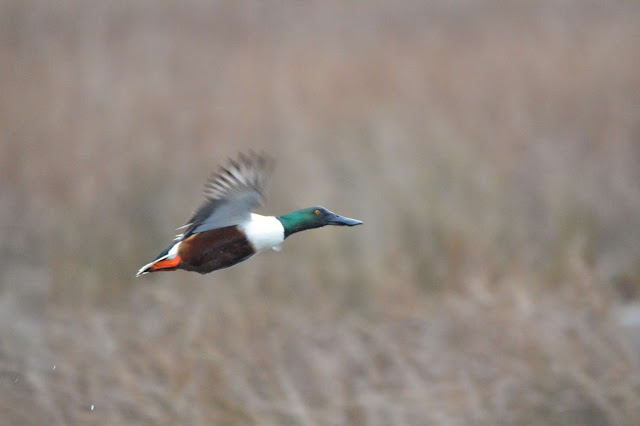


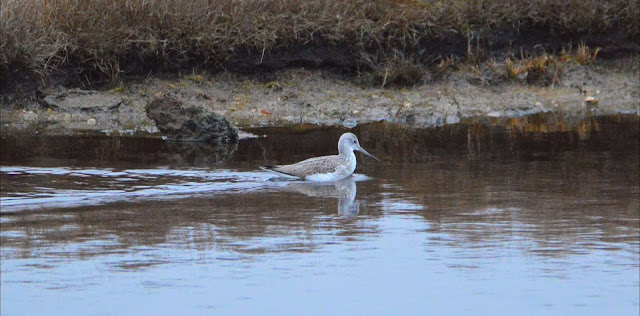






























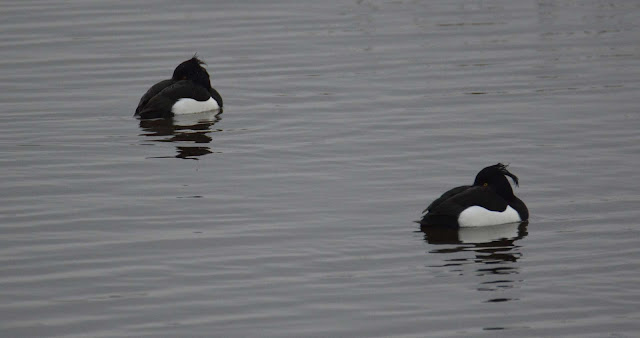



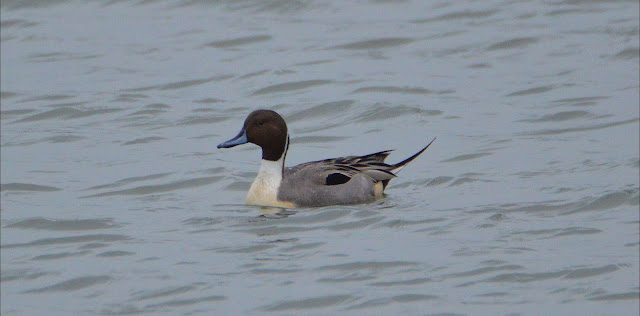








































































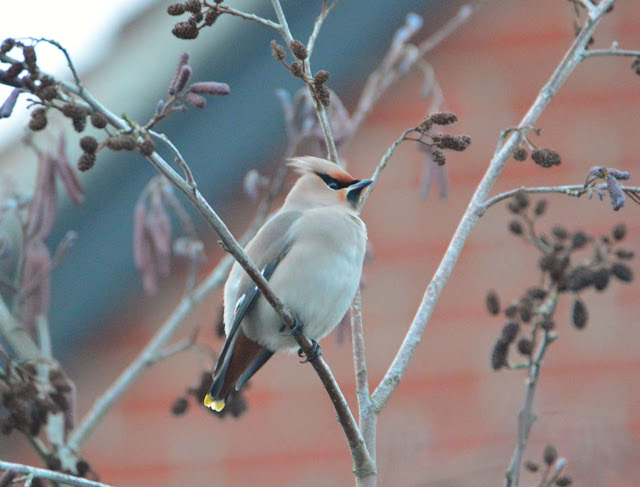






No comments:
Post a Comment
Please leave me a message if you would like to do so.